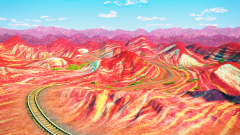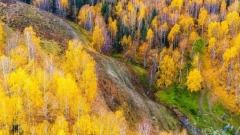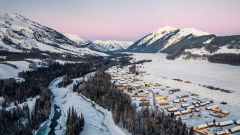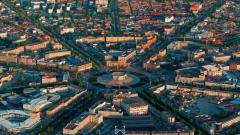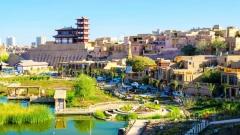Xinjiang, located in northwest China, is a land of deep history and vibrant culture — a vital part of the ancient Silk Road. As a gateway between East and West, it offers rich stories and heritage for culture lovers and history seekers.
From vast deserts to expansive grasslands, from magnificent ancient ruins to vibrant modern cities, the Silk Road route in Xinjiang takes you through a millennium of history, offering a unique charm of this magical land.
Urumqi: The Modern Gateway to the Silk Road
Urumqi, the capital of Xinjiang, is the first stop for many travelers embarking on the Silk Road journey. It is a hub connecting China with Central Asia and Europe, where modern and traditional cultures intertwine.
Recommended attractions:
1.Xinjiang International Grand Bazaar: As one of the most important markets on the Silk Road, it is rich in Uyghur culture. Here, you can buy spices, carpets, jewelry, and other unique goods, as well as taste authentic Xinjiang cuisine such as grilled lamb skewers and pilaf.
2.Tianshan Tianchi Lake: Known as the “Heavenly Lake,” this place features crystal-clear waters surrounded by snow-capped mountains, creating a picturesque scene. During the summer, the lakeside grasslands are lush and green, making it a paradise for hikers and photographers.
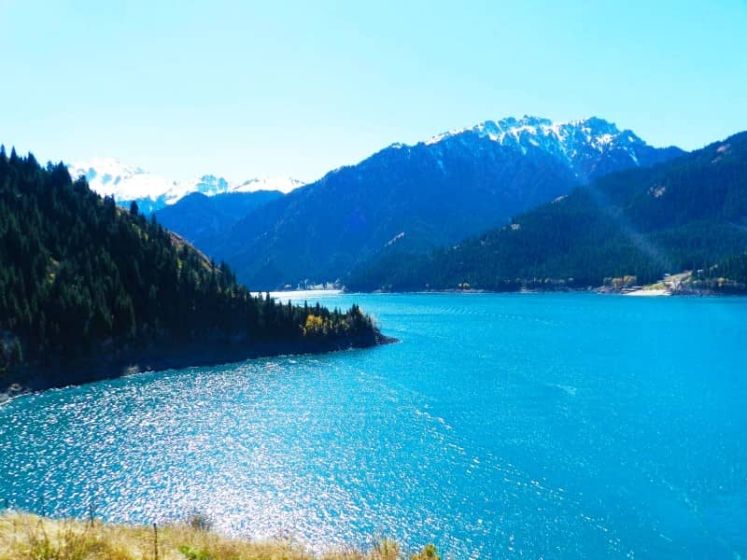
Heavenly Lake of Tianshan
Turpan: A Symphony of Fire and Oasis
Located in the central part of Xinjiang, Turpan is a place rich in historical sites and unique natural landscapes. It is a vital hub on the Silk Road, where ancient merchants brought cultures and goods from the Middle East and West Asia.
Recommended attractions:
1.Jiaohe Ancient City: An ancient city ruin on the southeastern edge of Turpan’s desert. Jiaohe was once the political and commercial center of ancient Turpan and is a valuable site for studying the history of the Silk Road.
2.Flaming Mountains: Named for its scorching climate and distinctive topography, the Flaming Mountains are a landmark on the Silk Road. The red rocks under the sun look like flames, presenting a unique beauty.
3.Grape Valley: Famous for its sweet grapes, this lush green valley in Turpan is a great place to taste fresh grapes in the autumn.
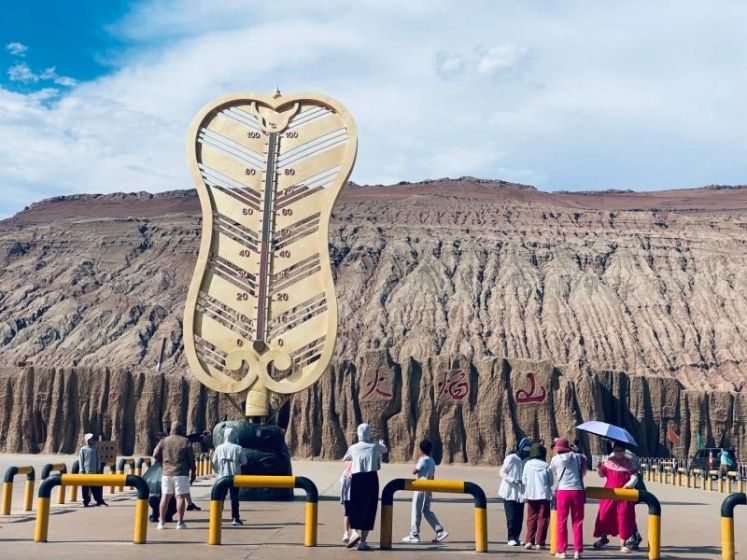
Flaming Mountains
Kashgar: The Endpoint of the Silk Road
Located at the westernmost edge of Xinjiang, Kashgar is the terminus of the Silk Road and a cultural hub connecting Central Asia and the West. It is rich in Uyghur culture and serves as a microcosm of Xinjiang’s history and heritage.
Recommended attractions:
1.Id Kah Mosque: The largest mosque in Kashgar, it is the center of religious activity for Uyghur Muslims and an important cultural landmark on the Silk Road. The mosque’s architecture blends Persian and Chinese traditional styles, making it an ideal place for understanding Uyghur culture.
2.Old City of Kashgar: Preserving traditional Uyghur houses, the narrow and ancient streets are filled with bustling markets. Strolling through Kashgar’s Old City feels like stepping back into the prosperous era of the Silk Road, offering visitors a chance to experience traditional urban culture.
3.Kashgar Grand Bazaar: A major trading hub on the Silk Road, this market remains the center of local commerce. You can buy Uyghur handicrafts, dried fruits, spices, and other local goods.
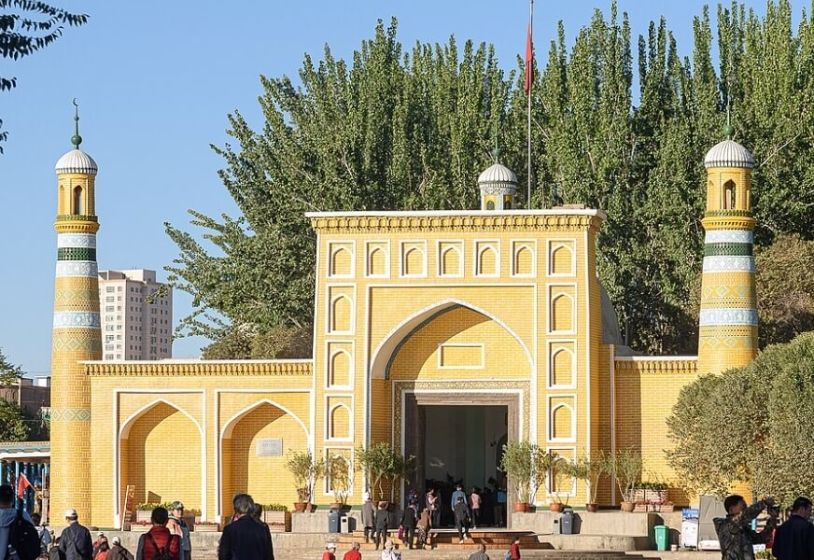
Id Kah Mosque
Korla: The Oasis in the Silk Road
Located on the southern edge of the Turpan Basin, Korla is the capital of Bayingolin Mongol Autonomous Prefecture. As an oasis city on the Silk Road, Korla attracts visitors with its beautiful natural landscapes and historical sites.
Recommended attractions:
1.Bosten Lake: One of the largest inland lakes in China, surrounded by lush greenery. It is an ideal resort destination where visitors can boat, fish, and enjoy close contact with nature.
2.Ancient Sites of Yili County: These ruins, dating back to the Western Han Dynasty (around the 2nd century BC), were once an important city along the Silk Road. The site showcases the grandeur of ancient civilizations, where visitors can explore ancient buildings, artifacts, and murals.
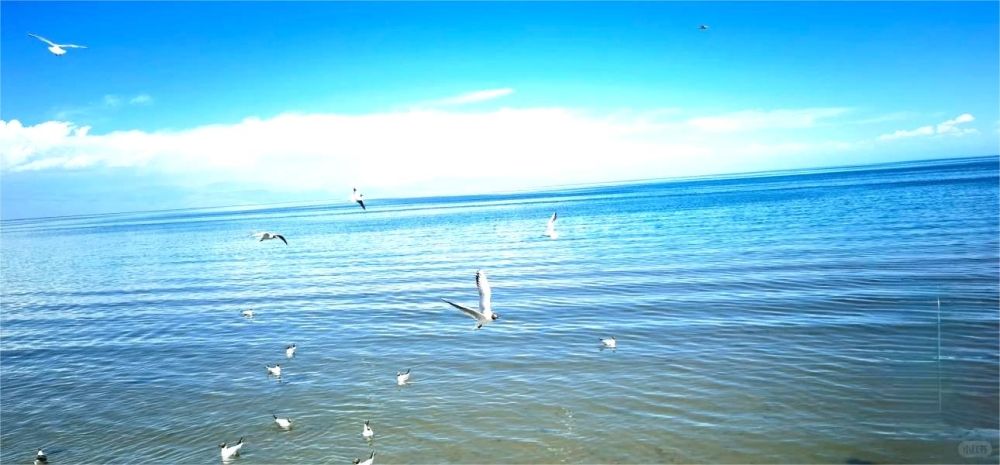
Bosten Lake
Kanas Lake: A Natural Wonder on the Silk Road
Located in the northern part of Xinjiang, Kanas Lake is one of China’s most beautiful lakes. The emerald waters, surrounded by snow-capped mountains and forests, make it a perfect destination for hiking, photography, and adventure.
Recommended attractions:
1.Kanas Lake: The lake appears in different shades of blue and green under the sunlight, creating a stunning view. The area has distinct seasons, each offering different natural landscapes. In autumn, the layers of falling leaves reflect in the lake’s surface, resembling a fairytale world.
2.Hemu Village: An ancient Tuva ethnic village by Kanas Lake, it retains its original natural charm and unique cultural features. The traditional wooden houses, grass huts, and the villagers’ way of life make it feel like stepping back in time to the era of the Silk Road.
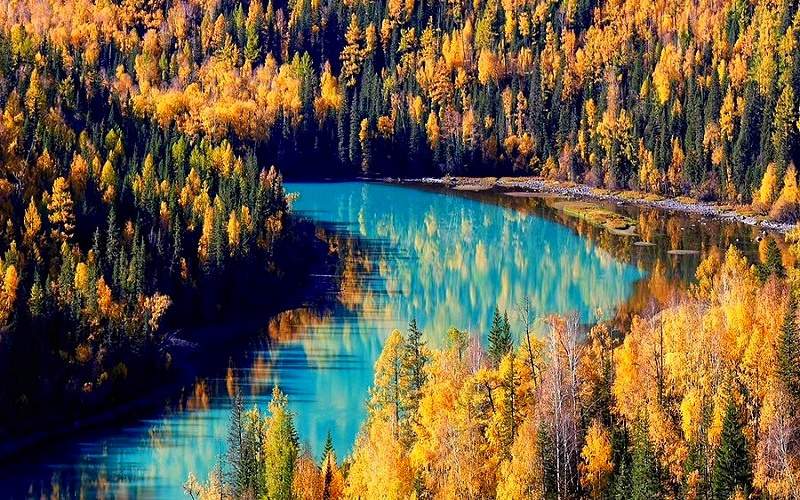
Kanas Lake
China Dragon Travel Xinjiang Silk Road Route
RouteA:10-Day Silk Road Tour: Dunhuang, Mogao Caves, Urumqi & More $ 1383
-
- Deep Exploration of the Ancient Link Between East and West.
- Classic Silk Road, featuring lakes, deserts, plateaus, forests, glaciers…
- Small group tours with 6-10 people, golden-tier Chinese/English-speaking tour guides.
RouteB:13-Day Silk Road Tour: Dunhuang, Mogao Caves, Urumqi, Kashgar, Taxkorgan & More $ 1774
Travel Tips
- Best Travel Season: Spring and autumn are the best times to visit Xinjiang, with pleasant temperatures and beautiful scenery.
- Sun Protection: Due to Xinjiang’s strong sunlight and intense UV rays, visitors should bring sunscreen, sunglasses, and sun hats.
- Transportation: Xinjiang has convenient transportation options, including airplanes, trains, and long-distance buses. Visitors can choose the most suitable mode of travel based on personal needs.
The Xinjiang section of the Silk Road is more than just an ancient trade route; it is also a bridge connecting Eastern and Western cultures, exchanging ideas and arts. From ancient ruins to modern cities, from vast deserts to lush lakes, every corner of Xinjiang showcases the unique charm of the Silk Road. Embark on this ancient journey and experience the fascinating blend of ancient and modern civilizations—the cultural and natural wonders of Xinjiang will leave you with an unforgettable experience.




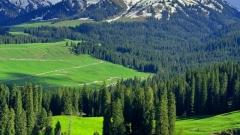
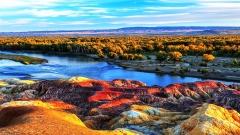
![11 Day Tour[Winter Limited] Drunken Beauty Xinjiang Ice and Snow Kanas Fairy Tale New Vision](https://www.chinadragontravel.com/wp-content/uploads/2025/12/25cff76cef9e445-240x135.jpg)
